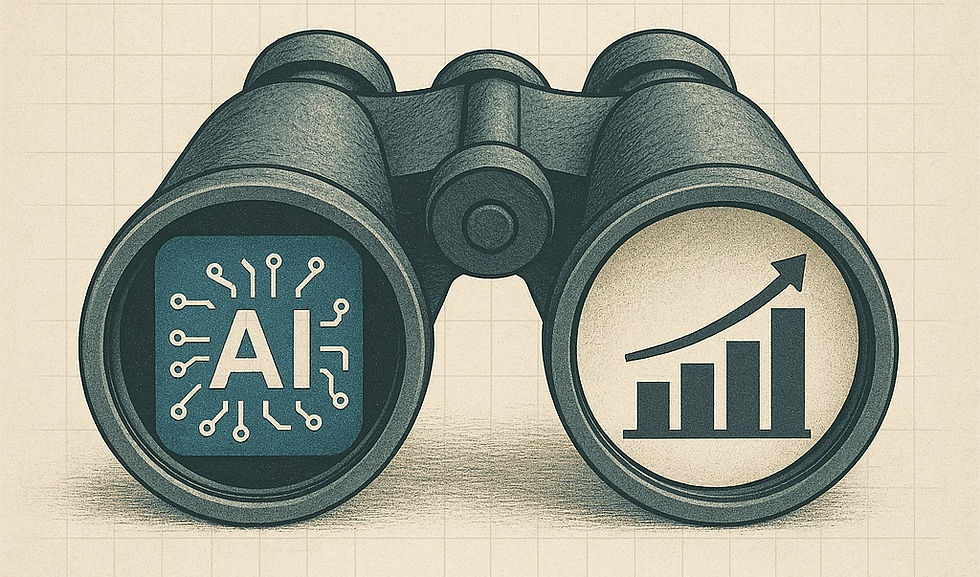Business Intelligence – the next step – Part 1
- Catherine Louropoulou
- May 10, 2022
- 3 min read
Updated: Oct 14, 2022

In the first part of this article we will be focusing on the information capacity of the systems available to a company and the ease with which the latter derives or discovers new knowledge from the wealth of information available, i.e. the large amount of historical data stored in its databases. First of all, to describe the current situation, we would divide the majority of organisations into two broad categories:
Α. Many companies, especially small and medium-sized ones, rely on ready-made reports generated from their main software (i.e. ERP or CRM) or other specialized applications. They either use these reports "as is" or they further process them in EXCEL, this depending on what are the new requirements that arise and must be met.
Β. Another category of larger companies has realized the limitations of the previous approach and uses more sophisticated "business intelligence" tools. These tools clearly increase the flexibility to create new reports or view data from new angles. And in fact, several times, without the direct intervention of their IT. To name some examples:
The ability of these tools to offer "cubes" i.e. pre-built views, which users can combine and view the same data with new analyses.
The ability for users to create their own reports. They can also share them with other stakeholders.

However, these approaches, too, often fail to answer a number of other (" more recent ") questions. Here are some of these that we often encounter from anxious entrepreneurs or general managers:

How can I use the data I already have (which by definition are historical, describing past situations and events) to predict the future? (Let's not forget that the CEO's job is to detect future trends and prepare the company for what's coming...)

How can I complement the databases I have with other data that I will find elsewhere (i.e. not from internal business systems)? There are useful data in external sources, depending on the scope of the organization. For example meteorological data for agricultural businesses, demographic data for utilities and courier businesses, economic data from the statistics agency or similar for financial services, businesses, etc.

What are the existing technologies that allow me to view the status of my data in the past? (For example, a typical accounting program shows us the status of unpaid invoices, today. What was that status a year ago? Which customers improved and which ones got worse?)

How can I take advantage of new technologies such as artificial intelligence and machine learning and apply them on my data? (At this point we make a comment that the typical generated "reports" represent the current situation or at least offer some possibilities to reflect the past).
So it seems that the traditional techniques mentioned at the beginning of this article do not seem to be enough anymore to give the organization the competitive advantage it [should] seek through the development and investment in "reporting" (we don't like the "narrowness" of this term, but we borrow it, because it is common now!)

In part 2 of this article, we will propose an approach that addresses the four main questions we have posed.
We would like to point out that E-ON has a large number of business solutions and products that incorporate rich reporting and our long time experience. However, we too have detected some limitations in these systems and propose new solutions to address your most challenging questions concerning business intelligence.




Comments